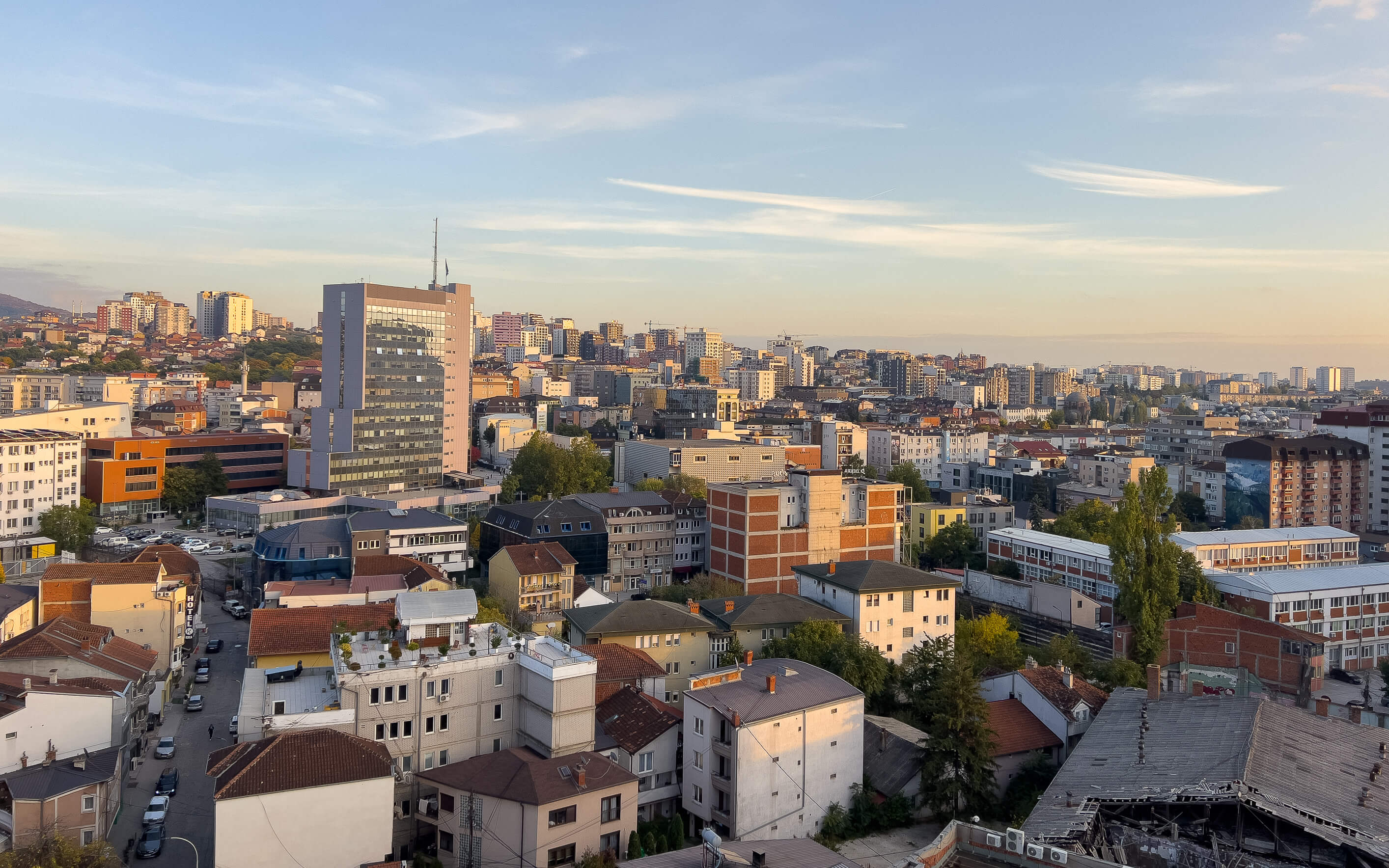
.svg)
Pristina, the capital and largest city of Kosovo with around 230,000 inhabitants, is still a real insider tip for city trips in Europe.
In February 2008, the parliament proclaimed independence, making Kosovo no longer a part of Serbia.
However, the country’s international legal status remains disputed, as not all UN member states recognize the Republic of Kosovo as an independent state.
The city has a charm of its own, shaped by a sense of new beginnings, youthful energy and a warm, welcoming atmosphere.
Unlike major European cities such as Budapest, Warsaw or Riga, which are already crowded with tourists, Pristina feels pleasantly relaxed.
You will not find the large, classic attractions here that usually create sightseeing stress.
Instead, the city invites you to stroll around at your own pace, enjoy a coffee and take in the rhythm of local life.
One of the best things about visiting Pristina is the fact that the euro is used as currency, even though Kosovo is not an EU member.
Prices are also noticeably lower than in many Western European countries.
This makes Pristina perfect for a relaxed and budget-friendly city break away from the usual tourist hotspots.
This guide shows you the most important sights and highlights in Pristina and explains why a visit is truly worthwhile.
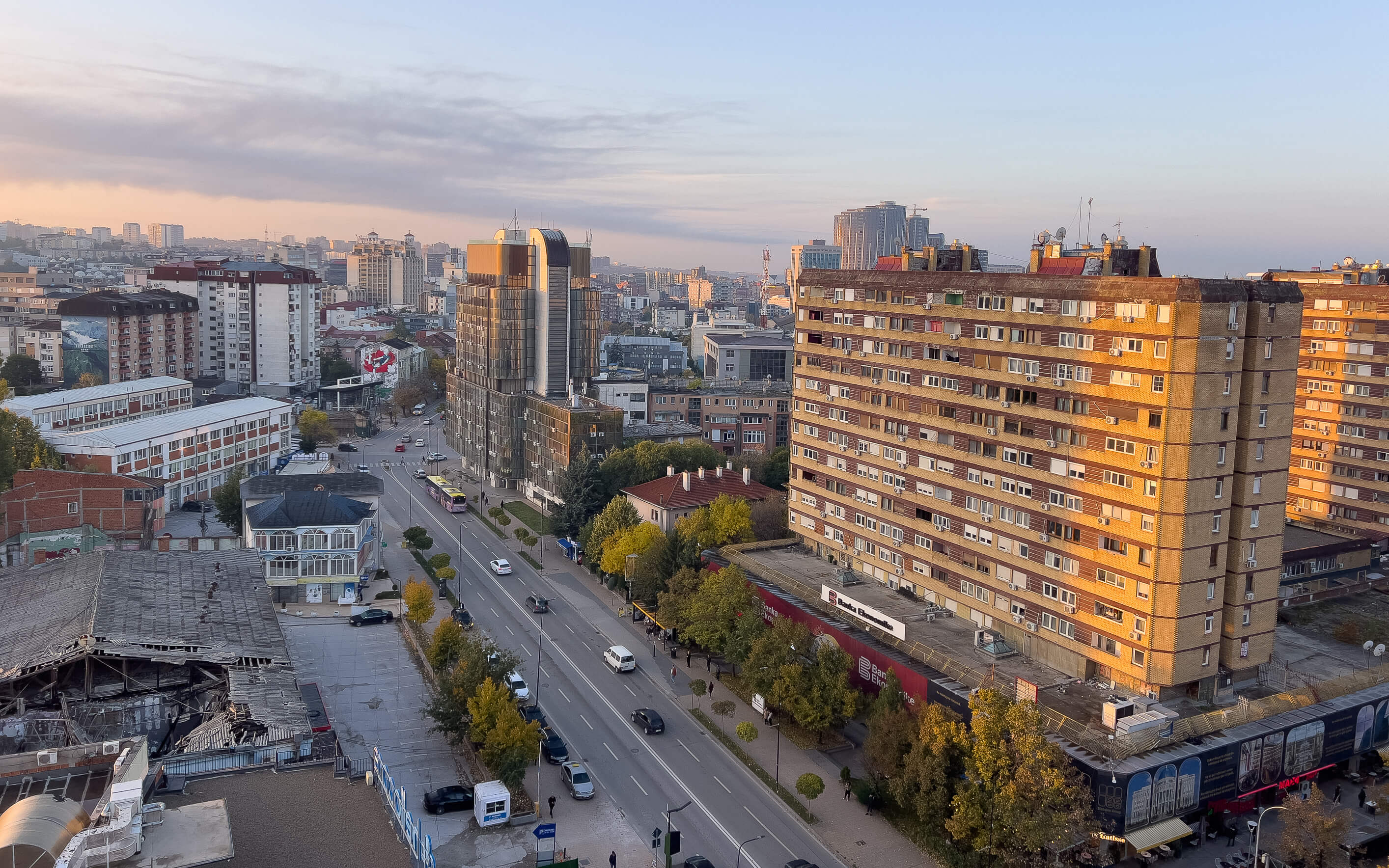
BEST TIME TO VISIT PRISTINA
Pristina can be visited at any time of the year because each season has its own appeal.
In spring, nature comes back to life and the city begins to bloom.
In summer, many festivals and long evenings attract visitors, although temperatures can become very hot.
In winter, the weather is often very cold, but the festive lights around Christmas give the city a very special atmosphere.
In autumn, the temperatures are pleasantly mild and ideal for sightseeing and strolling through the old town. At the same time, the leaves turn colorful and bathe the city in warm light.
We visited at the end of October and experienced exactly that: mild weather and vibrant autumn colors. This is why we can highly recommend autumn as a great time to visit Pristina.
HOW MANY DAYS TO STAY IN PRISTINA
It depends on how much you want to see and experience. Here is a general guideline:
- Stay 1 day in Pristina if you want to visit the most important sights such as the new Mother Teresa Cathedral, the National Library, the Nënë Tereza Boulevard and the old town with its charming cafés and small shops.
- Stay 2 days in Pristina if you prefer to take your time and explore the city at a relaxed pace. A visit to Bear Sanctuary Prishtina, the Gračanica Monastery or the modern Pristina Mall is also worthwhile.
- Stay 3 days or more in Pristina if you want to take a day trip to the nearby Sharr Mountains or to the beautiful town of Prizren with its historic Ottoman old town.
HOTELS AND ACCOMMODATION IN PRISTINA
When visiting a city, the location of your accommodation plays an important role.
Our recommendation is to stay as central as possible. This allows you to reach all major sights in Pristina on foot and explore the city in a relaxed way.
We chose the Downtown Apartment, which we booked through booking.com.
The accommodation is very centrally located, has a modern interior and offers plenty of space as well as a fantastic view over the rooftops of the city.
It was also important to us that it had a private and free parking space for our rental car.
We deliberately decided against staying in a hotel. In larger cities, we prefer to have breakfast outside and try different cafés, but we still like the space and comfort that an apartment provides.
HOW TO GET TO PRISTINA
The fastest way to reach Pristina is by plane. The city is served by Adem Jashari International Airport (PRN), which offers regular direct flights from many European cities.
Low-cost airlines such as Wizz Air and Eurowings often provide very affordable fares, and you can easily search for suitable connections on skyscanner.com.
If you are traveling from outside Europe, you will usually need to connect through major hubs such as Istanbul, Vienna, Zurich or Frankfurt, which offer frequent flights to Pristina.
The average flight time from Central Europe is around 1.5 hours, while flights from other regions vary depending on your route and layovers.
Although Kosovo is not a member of the European Union, entry is straightforward for most nationalities.
Travelers from the EU, the United States, Canada, Australia, the United Kingdom and many other countries can enter visa free for short stays.
A valid passport is required for most visitors, while EU citizens can enter with a national ID card. If in doubt, it is recommended to check the latest entry requirements before your trip.
The easiest and fastest way to get from the airport to the city center is by Bolt or a regular taxi. The ride usually takes between 20 and 30 minutes depending on traffic.

By the way, we visited Pristina as part of a road trip through North Macedonia, which means we arrived by rental car from Skopje.
Crossing the border into Kosovo was completely smooth. We briefly showed our IDs and were able to continue our journey right away.
When picking up the rental car, we had to inform the company that we planned to drive outside the country. For this, an additional fee of 35 euros was charged.
We booked our rental car through DiscoverCars and had a very good experience with their service.

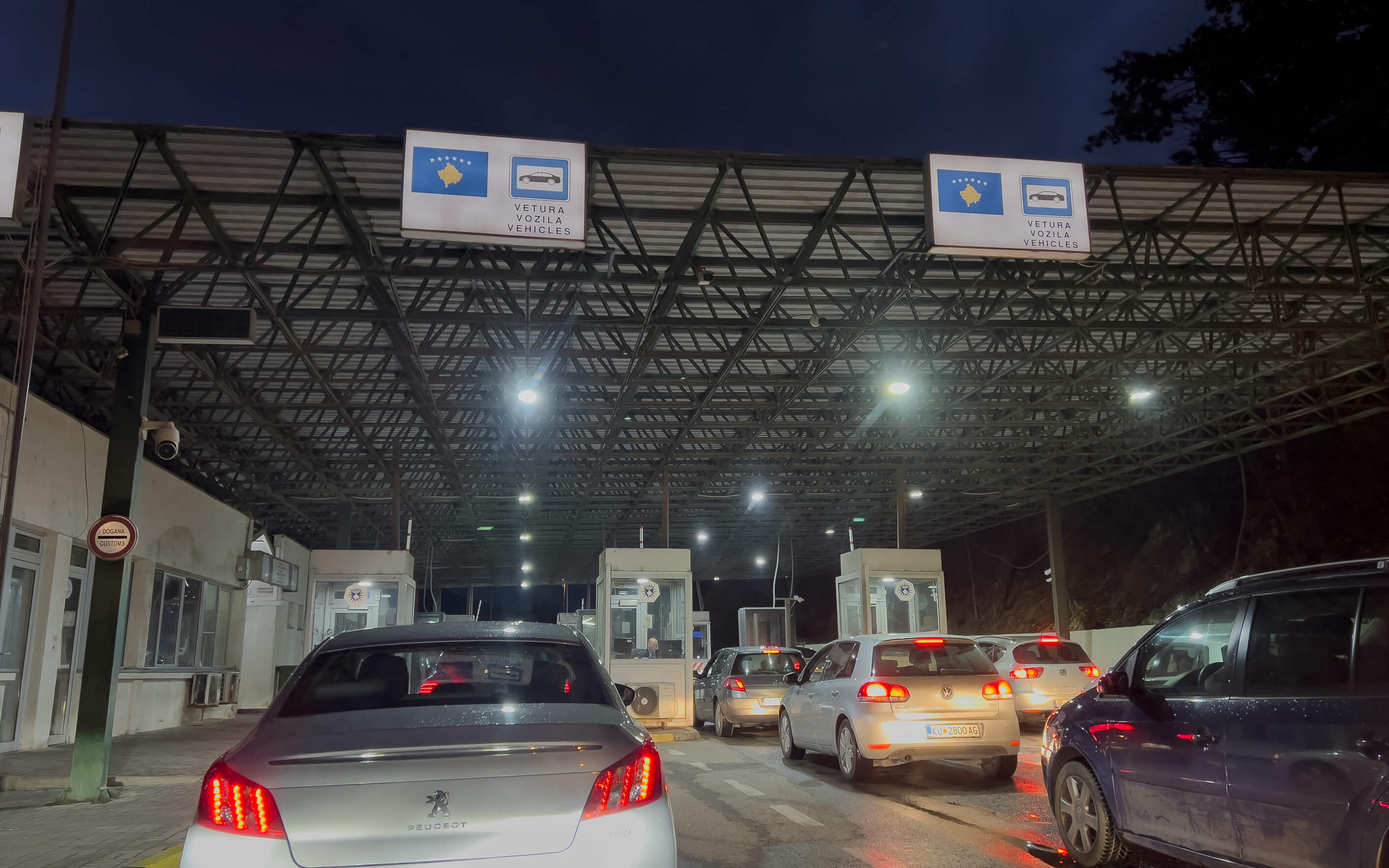
GETTING AROUND PRISTINA
The center of Pristina and most of the city’s main sights are located close to one another, which makes it easy to explore everything on foot.
Whether it is the National Library, the new Mother Teresa Cathedral, the Nënë Tereza Boulevard or the old town, all of them are situated in the heart of the city and can be discovered on a relaxed walk.
For destinations outside the city center, such as Bear Sanctuary Prishtina, the Gračanica Monastery or the modern Pristina Mall, it is best to use a car, Bolt or a regular taxi.
These places are located beyond the inner city and are easiest to reach by vehicle.
THE SIGHTS IN PRISTINA
PEDESTRIAN ZONE, SKANDERBEG SQUARE AND MOTHER TERESA BOULEVARD
Mother Teresa Boulevard is the lively center of Pristina, and during your stay you will almost certainly end up here sooner or later.
The wide pedestrian zone begins at Skanderbeg Square, where the statue of the Albanian national hero stands, and continues all the way to the modern Mother Teresa Cathedral, whose bell tower can be seen from afar.
Along the boulevard you will find many small shops, cafés and restaurants that invite you to stroll and take a break.
There are also several statues and monuments, including the well-known monument of Mother Teresa, called Sheshi Nëna Tereze in Albanian.
The boulevard is a popular meeting place for people of all ages. It is especially busy on weekends, when many locals walk along the street with friends or family, enjoy a coffee or have an ice cream. For children, there are small stands selling popcorn, balloons and toys.
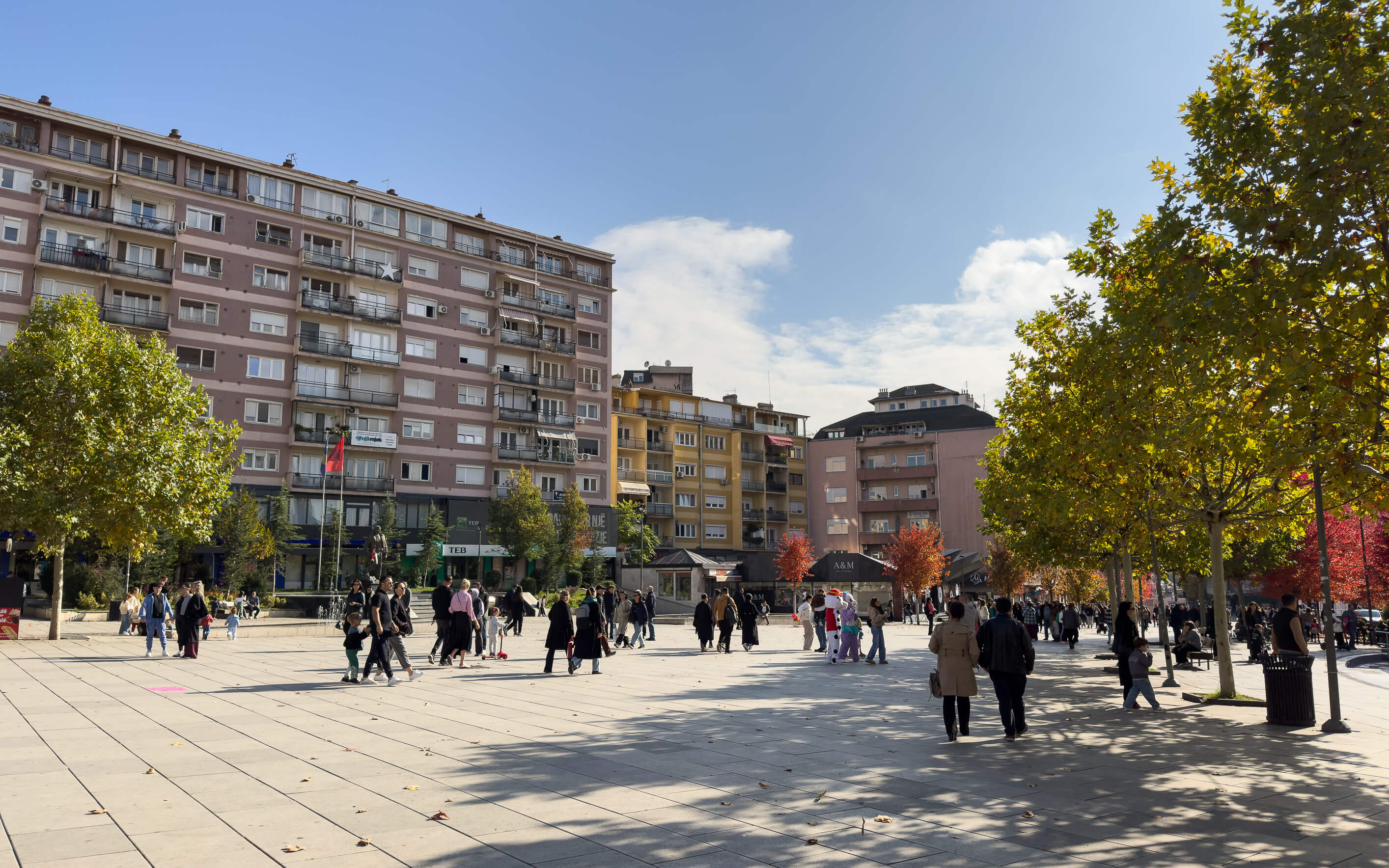
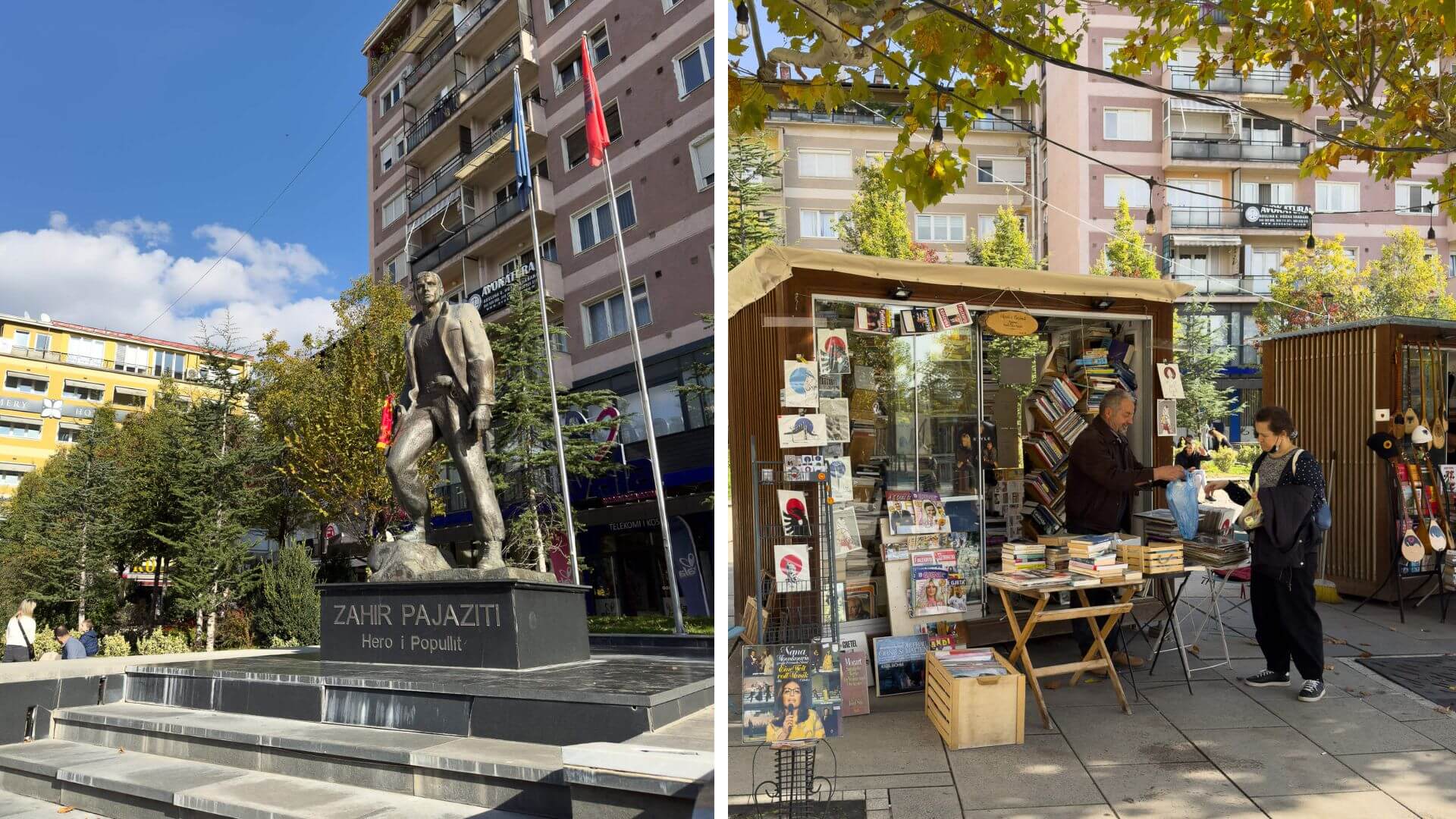
MOTHER TERESA CATHEDRAL
You can spot Mother Teresa Cathedral, the tallest religious building in Pristina, from far away.
Both the exterior and the interior are simple and modern in design. The large colorful stained-glass windows create a beautiful contrast and fill the space with light in many different shades.
A personal highlight for us was the viewing platform in one of the two bell towers, which are about 70 meters high.
For a small fee, payable in cash, you can take the elevator to the top. From there you are rewarded with a fantastic view over the rooftops of Pristina and the surrounding hills.
The best time to visit is at sunset, when the warm golden light bathes the city and creates a very special atmosphere.
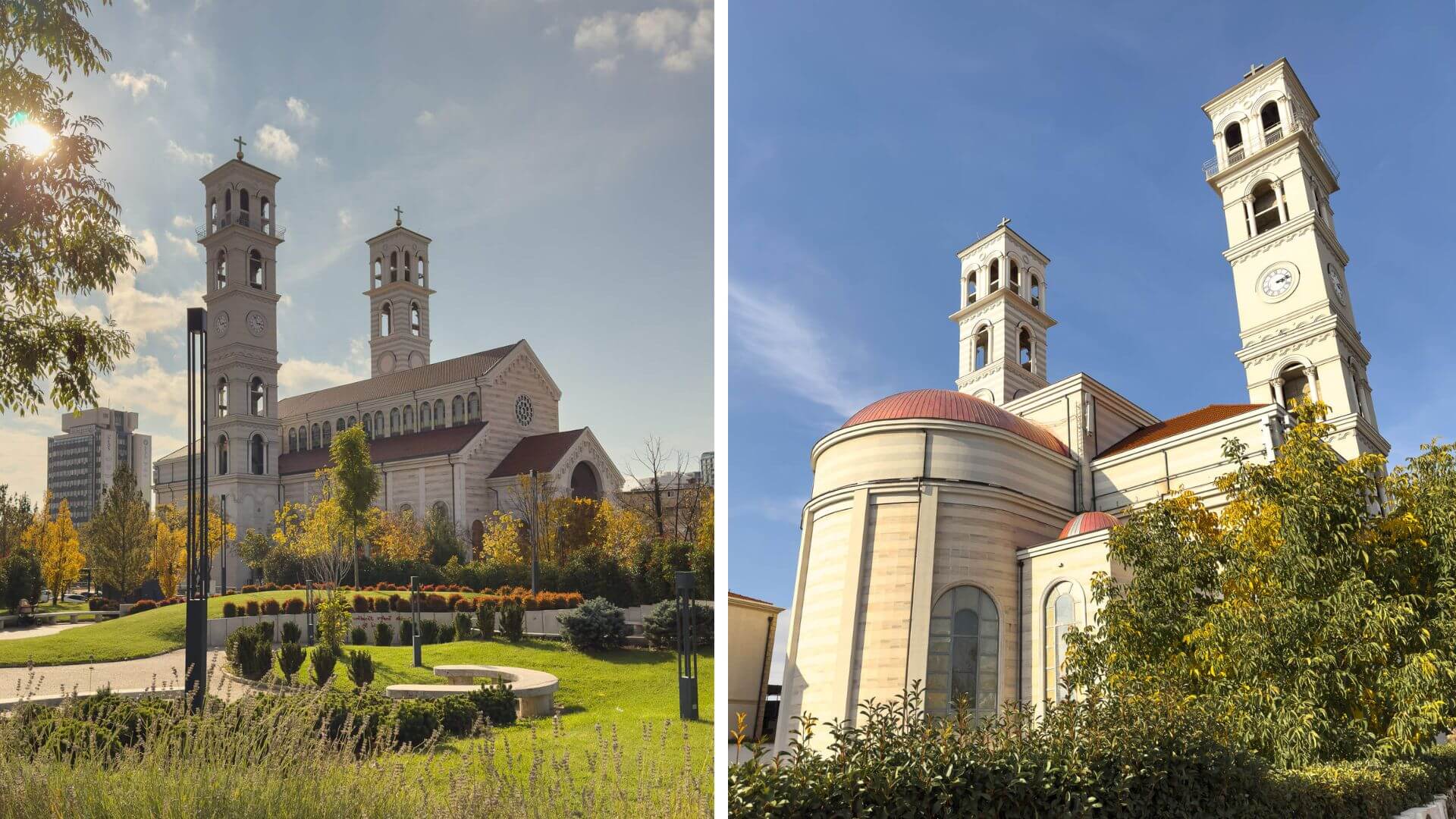
NATIONAL LIBRARY OF KOSOVO
Just a short walk from Mother Teresa Cathedral stands a truly unique building, the National Library of Kosovo, which is the largest library in the country.
Its most distinctive feature is its unusual architecture. The structure, completed in 1982, continues to divide opinions to this day.
The British newspaper The Telegraph once called it one of the ugliest buildings in the world, while others see it as a bold and futuristic masterpiece.
The best way to decide for yourself is to stand right in front of it.
The building is made up of 99 white glass domes and is wrapped in a grid of metal beams that give it its unmistakable appearance.
Despite, or perhaps because of its design, the National Library is now one of Pristina’s best-known landmarks and is definitely worth a short visit.
Behind the library, you will find another controversial structure, the unfinished Serbian Orthodox Church.
Construction began in 1991, but came to a halt with the outbreak of the war in 1995.
Since the predominantly Muslim population of Pristina opposed its completion, the church has remained unfinished to this day.
The abandoned shell now stands as a quiet yet powerful reminder of Kosovo’s turbulent history.

NEWBORN MONUMENT
For some, it is simply street art, but for others it is the symbol of Pristina: the Newborn Monument.
It is considered one of the most significant works of art in the city and a symbol of the new beginning of the young state of Kosovo.
The huge sculpture stands on the square in front of the Palace of Culture, Youth and Sports.
It was officially unveiled on 17 February 2008, the day Kosovo declared its independence from Serbia.
Five years later, in February 2013, a government commission decided to redesign the monument for the anniversary.
Since then, it has been repainted almost every year shortly before Independence Day by local artists.
As a result, the Newborn Monument appears again and again in fresh colors and creative designs.
It has become a symbol of constant change and the dynamic spirit of the young country.
There is also plenty of street art to discover throughout Pristina.
Keep your eyes open and you will find colorful murals and creative graffiti on many building façades, giving the city a modern and artistic atmosphere.

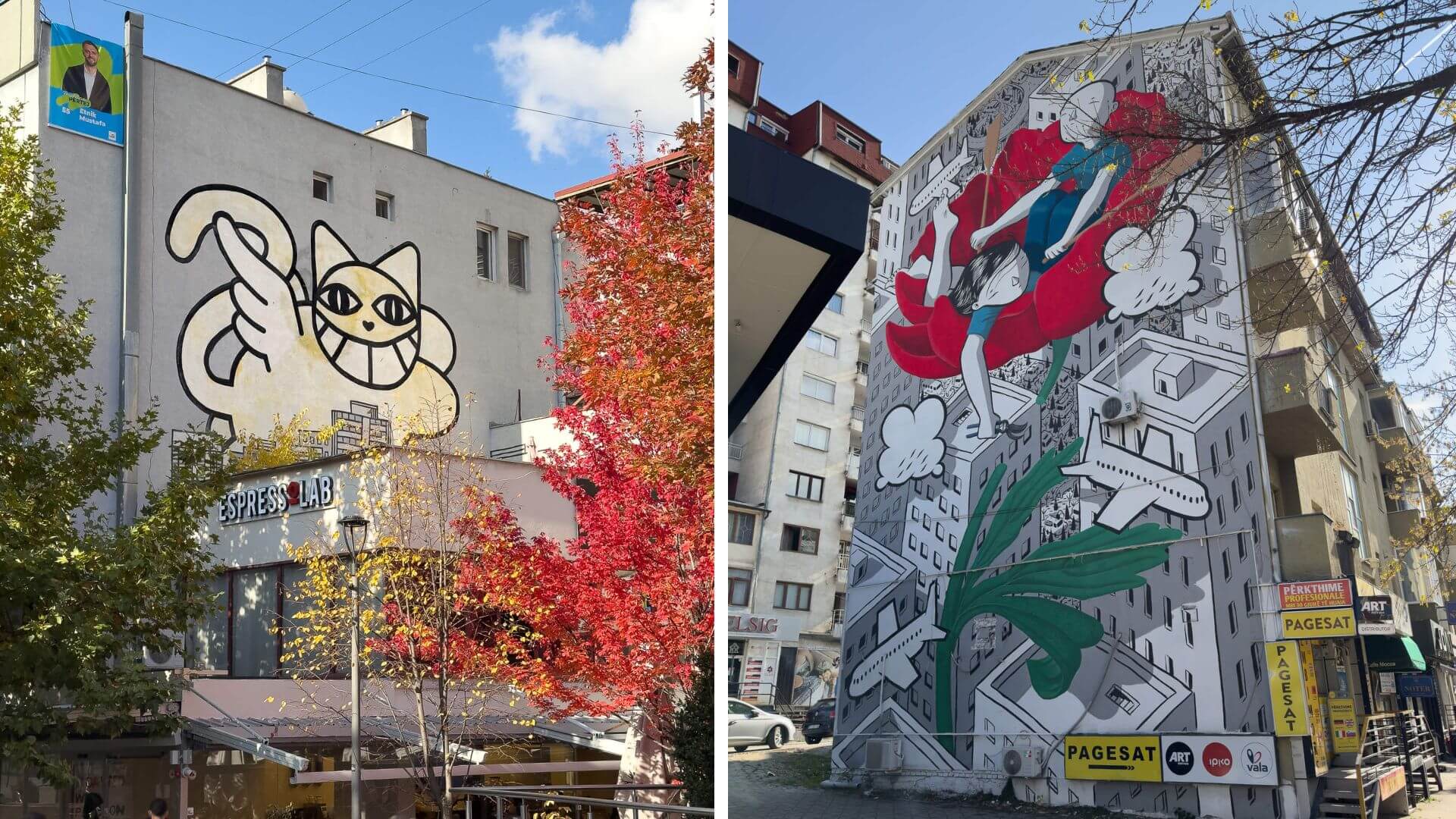
BILL CLINTON STATUE
A selfie with Bill Clinton, the former President of the United States? In Pristina, that is no problem.
On Bulevardi Bill Klintoni you will find a statue of the former US president.
It is admittedly quite modest in size and easy to miss, but right behind it the façade of a high-rise building features a huge mural with a photo of Bill Clinton and the flags of the United States and Kosovo, which immediately catches the eye.
The statue was erected as a sign of gratitude for his role in ending the Kosovo War of 1998 to 1999, and as a tribute to the NATO airstrikes that led to the withdrawal of Serbian forces and ultimately to the end of the conflict.
The monument was unveiled in 2009 in the presence of Bill Clinton, who also gave a speech at the ceremony.
In addition to the statue, the main road next to it was renamed Bill Clinton Boulevard in his honor, another expression of the strong bond and deep appreciation between Kosovo and the United States.

THE GRAND MOSQUE
In Kosovo, where the majority of the population is Muslim, a visit to a mosque is something you should not miss, at least from the outside if you are not Muslim.
We could already see it from our balcony, or rather we discovered it when we tried to find out where the calls of the muezzin were coming from as they echoed across the rooftops.
The Grand Mosque of Pristina, also known as the Sultan Mehmet Fatih Mosque, was built in the 15th century in traditional Ottoman style and is one of the oldest mosques in the country.
Its large central dome, the delicate interior decorations and the slender minaret are particularly impressive.
GREEN MARKET
Not far from the mosque you will find the Green Market.
It is not a classic sightseeing spot, but for us a market visit is always a highlight.
We believe there is hardly a better way to get an authentic glimpse into the everyday life of local people.
The market offers a bit of everything, from seasonal fresh fruits and vegetables to fragrant herbs, regional specialties, cigarettes and various everyday goods. A short visit is definitely worth it.
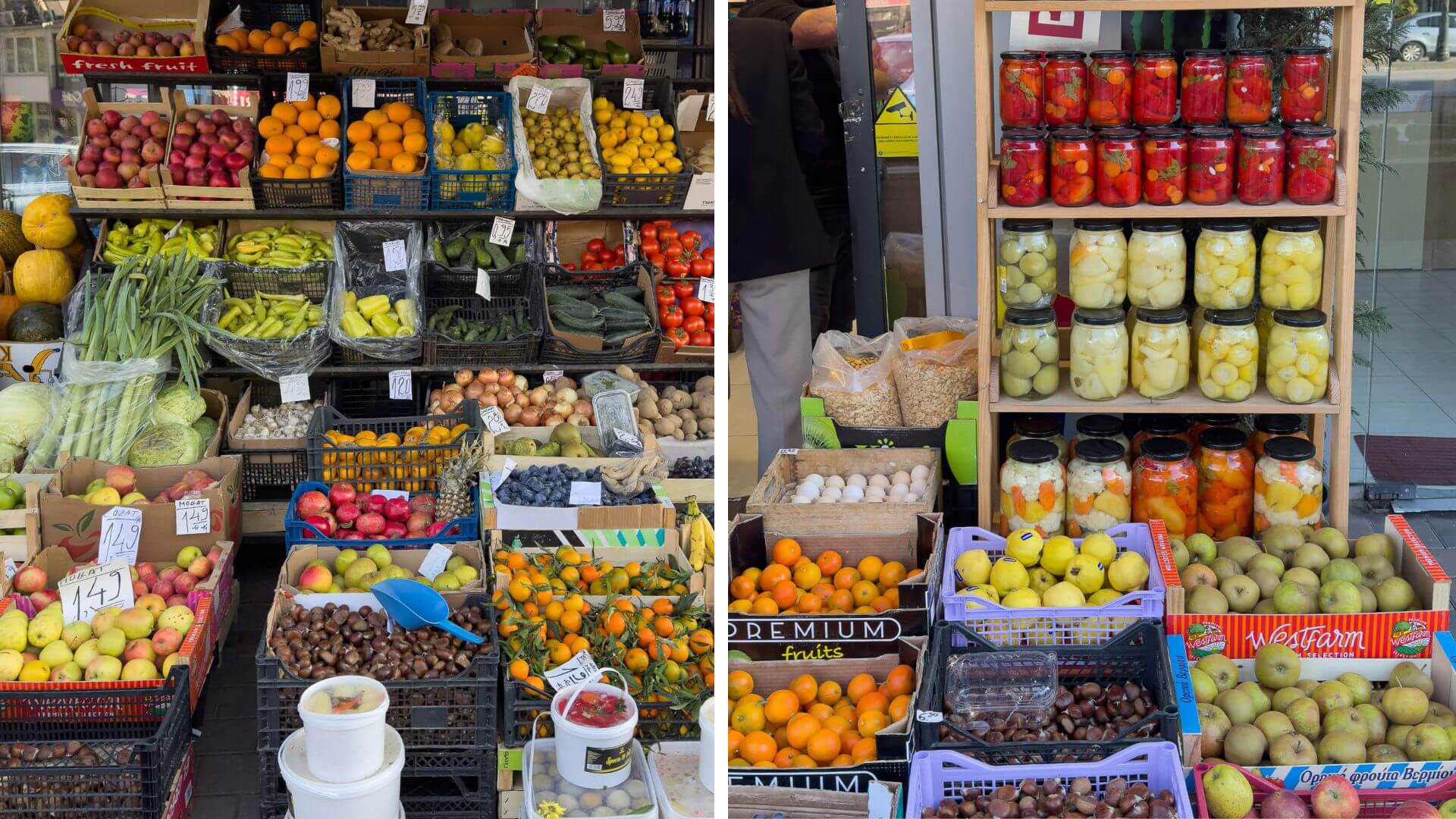
BEAR SANCTUARY PRISHTINA
About 20 kilometers outside Pristina, surrounded by nature, lies Bear Sanctuary Prishtina, a rescue center dedicated to the protection and proper care of brown bears.

In the past, there were no regulations in Kosovo regarding the keeping of brown bears, which meant that the animals could be kept privately.
Some of them lived in terrible conditions, for example in small cages in front of restaurants to attract visitors.
In November 2010, a law banning the private keeping of bears finally came into force.
However, to enforce this law, a suitable environment first had to be created because the animals could not be released into the wild.
As a result, the organization FOUR PAWS opened Bear Sanctuary Prishtina, which covers around 16 hectares and offers rescued bears a safe and natural home.
During our visit, 19 bears lived there in large green enclosures with ponds, trees and enrichment structures.
A circular walking path, which is partly a little steep, leads around the enclosures, allowing visitors to observe the animals calmly and from a safe distance.
Along the path, several information boards explain the bears’ former living conditions.
We think this place is a wonderful alternative to the city, especially for families with children.
In addition to seeing the bears, there is also a small playground where kids can play.
You can buy your ticket directly on site. Information about opening hours can be found on the official website.
Our tip: Make sure to visit the on-site restaurant. We thought the food and the service were excellent, and the prices were very reasonable.

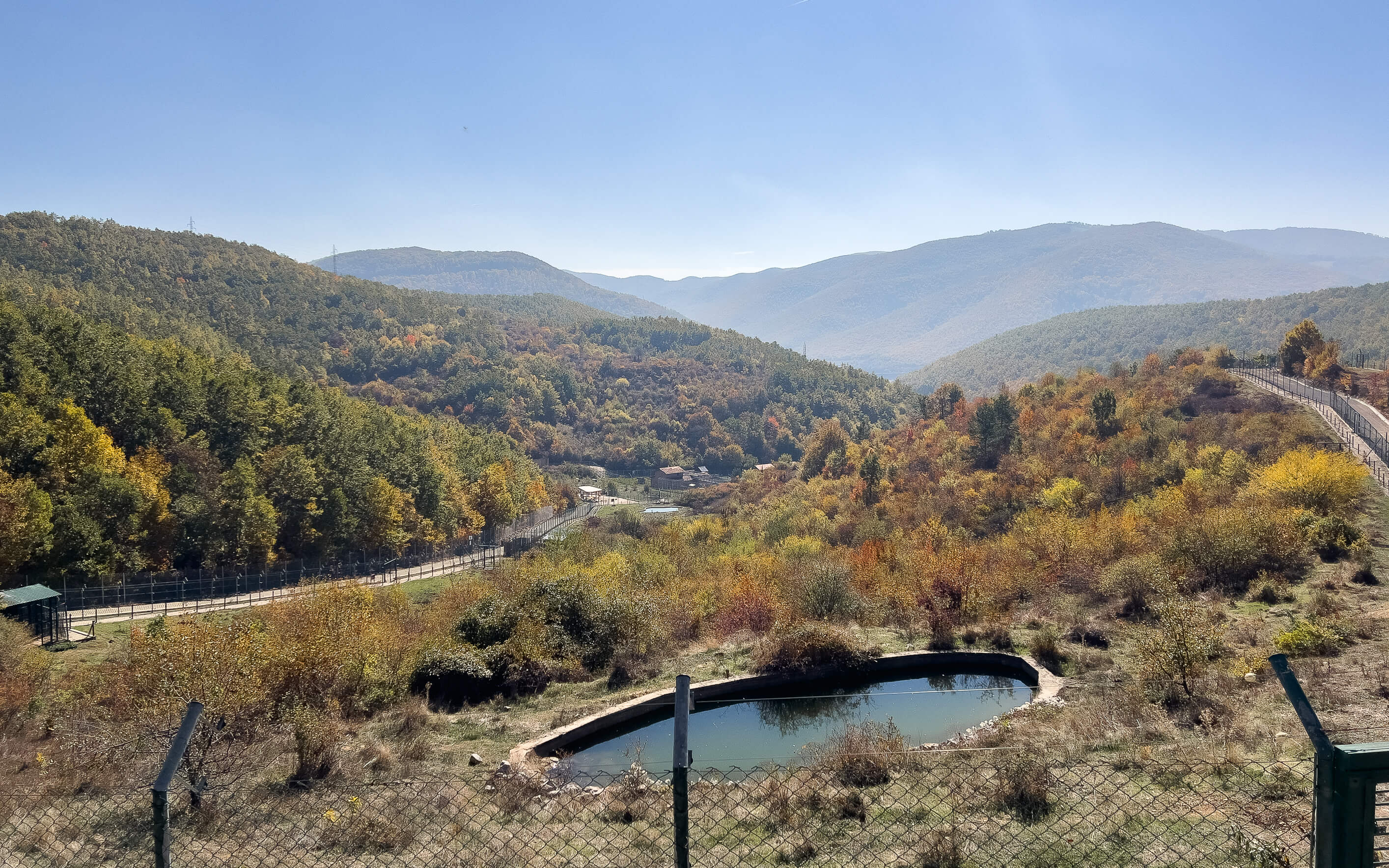
GRAČANICA MONASTERY
Our next stop was a long afternoon of shopping at Pristina Mall.
But before heading there, we made a detour to Gračanica Monastery, which is conveniently located on the route between Bear Sanctuary Prishtina and the mall.
Gračanica Monastery, which is still inhabited by nuns today, is one of the most important Serbian Orthodox monasteries in Kosovo and has been a UNESCO World Heritage Site since 2006.
It was built in the 14th century during the reign of the Serbian king Stefan Uroš II Milutin.
The monastery is located directly next to a busy main road, but once you pass through the protective walls and enter the large garden, you will find a peaceful and calm atmosphere.
The noise of the traffic can no longer be heard inside.
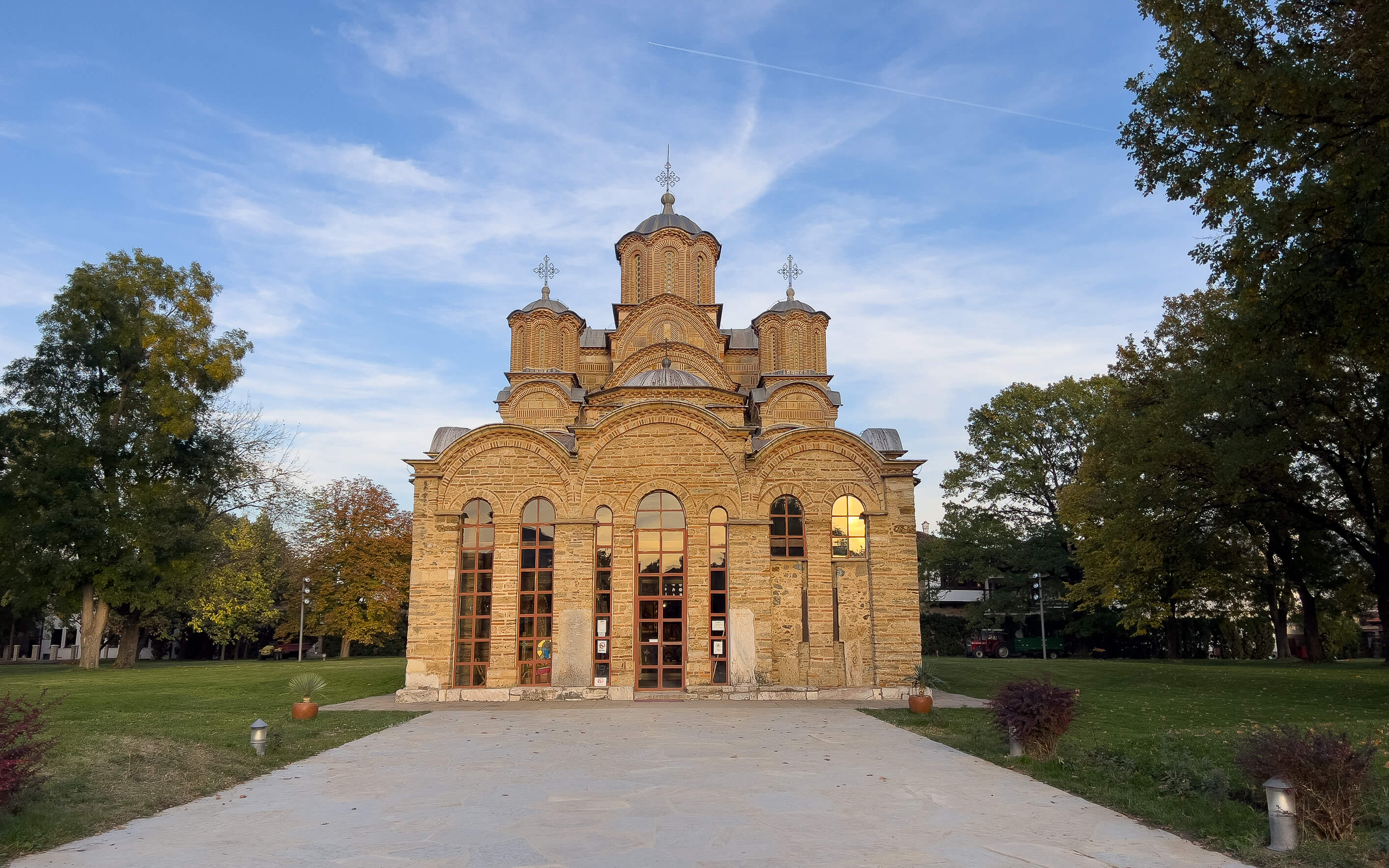
PRISTINA MALL
Located outside the city center, Pristina Mall is the largest shopping mall in Kosovo.
The center is truly enormous and offers everything a shopping enthusiast could wish for.
From international fashion brands to regional labels and small independent shops, there is something for everyone.
On the upper floor you will find a large food court with many restaurants and cafés, so you are guaranteed to find something to suit your taste.
There is also a huge cinema where English-language movies are shown.
For us, the highlight was definitely the entertainment area.
There is a large indoor playground for children, plenty of electronic games such as motorcycle simulators and racing games, and even a multi-level go-kart track.
Make sure to plan enough time for your visit, because it is easy to spend half a day here, whether you want to shop, eat or simply explore.

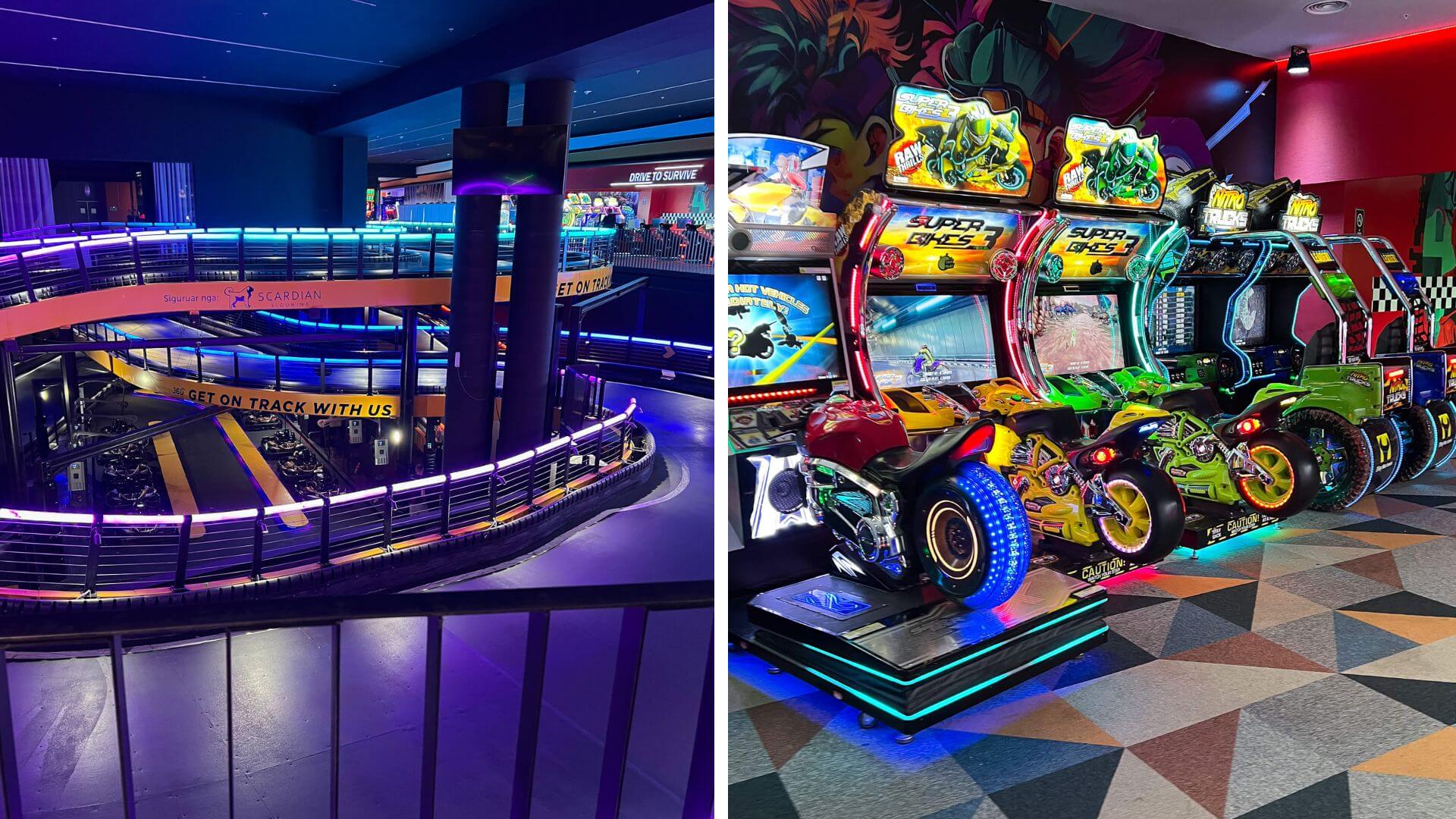
OUR CAFÉ AND RESTAURANT RECOMMENDATIONS
Some cafés in Pristina reminded us a little of Belgrade. Many of them are built as extensions to existing buildings and look a bit like conservatories.
This combination of modern style and a cozy atmosphere was something we really enjoyed.
For a delicious breakfast or a coffee with homemade cake in the afternoon, we recommend Tartine. We loved the beautiful vintage interior as well as the fresh and very tasty food.
If you are in the mood for pizza, you should definitely try Pizzeria Lotta Napoletana.
In a relaxed setting, either indoors or outside on the lovely terrace, you can enjoy a homemade pizza.
We also found the owner particularly charming and very talkative. He told us a lot about opening his restaurant and shared stories about the country and its people.

OUR PRISTINA CONCLUSION
Of course, there are certainly more impressive capitals in the world, with grand buildings, major museums and famous landmarks.
But this is exactly what makes Pristina so appealing to us. The city is still largely unknown and not overrun by tourists.
A city trip does not always have to turn into a hectic sightseeing marathon. For us, Pristina is the perfect example of how enjoyable it can be to slow down.
You can simply wander around, take your time for a coffee, get lost in conversation and still discover plenty of new things.
Another big plus is the excellent value for money, something that has become increasingly rare in many European capitals.
USEFUL LINKS & RECOMMENDED TRAVEL GUIDES FOR YOU
- Discover the best accommodations
- Find affordable flights at skyscanner.com
- Find affordable rental cars at DiscoverCars
- The best Travel Guides for Kosovo
- Unique Excursions to Experience in Kosovo
Note: This blog post contains our personal recommendations in the form of so-called affiliate links. If you book or purchase something through these links, we earn a small commission. There is absolutely no change to the price for you.

.svg)
.svg)
.svg)



